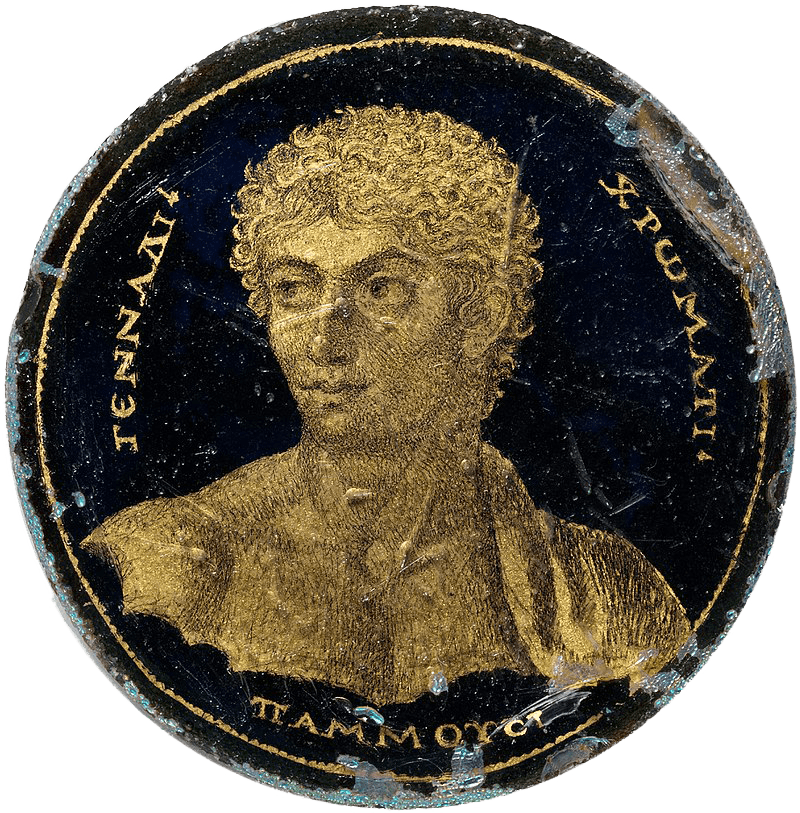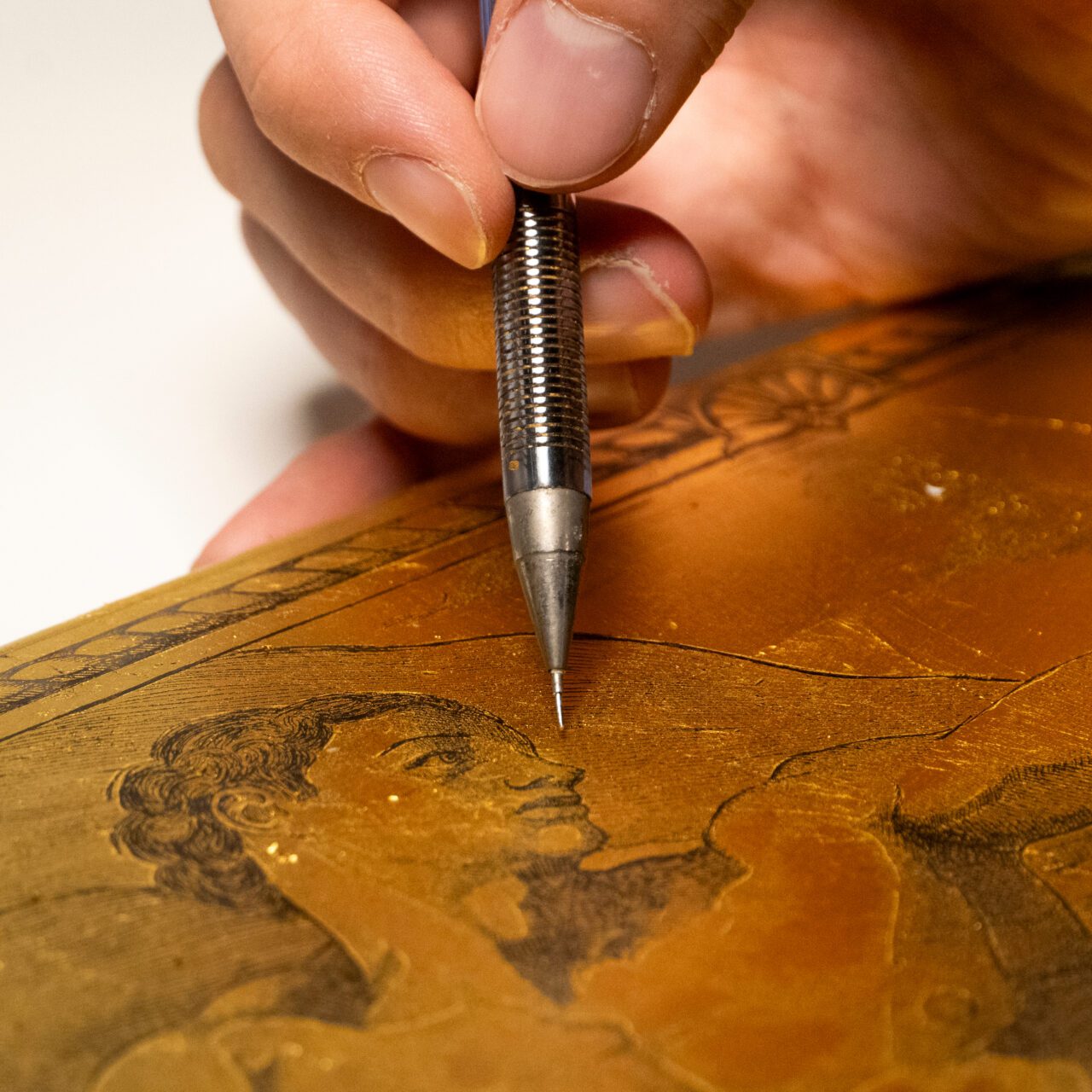Technique
Nothing new can be created if we don’t first learn how everything else was made.
The technique Riccardo Toso Borella uses to create his works is called “Graffito“, which involves precise engraving on gold leaf applied to glass. Some examples of artifacts created with this technique date back to ancient Rome. Venice, with its close ties to Byzantium from its origins, became fertile ground for inheriting this artistic heritage.
Beyond the artisanal aspect of the technique lies continuous conceptual labor. This is what elevates what I do to “Art.”
Gold Glass

As stated in Artists Techniques and Materials, Getty Publications, 2006, gold leaf is perfect for adding brilliance to transparent glass. Gold glass can be decorated through graffiti, painted with enamels, or enriched with transparent layers. This technique, which originated in Pharaonic Egypt, was highly appreciated during the early Christian period and was rediscovered by Johann Kunckel, who made it popular among Bohemian craftsmen from the latter half of the 17th century through the 18th. It is still used today for creating decorative plates. The terms “gold glass” and “gold ground” describe a type of decoration common in the 3rd and 4th centuries AD for adorning cups, goblets, and luxury items. Gold leaf, placed between two layers of transparent glass, bore inscriptions and depicted portraits, biblical scenes, or mythological themes. The technique used is still uncertain, but it appears that the gold leaf was applied under the base of the object and engraved with thin metal points; some details were then colored to enhance the designs. This decoration was finally covered with a thin layer of transparent glass to protect the gold during heat exposure; at this point, the object was inserted and pressed into a second blown glass container, fused in the furnace. This delicate and complex technique fell into disuse until Kunckel revived it at the end of the 17th century as Zwischengoldglas (double-gold glass), widely used by Bohemian craftsmen to gild the base and exterior of glass throughout the 18th century.
In modern uses of this ancient technique, first, a layer of enamel, grease, and turpentine oil is applied, combining to form a very sticky glue that is left to rest until, when lightly touched, it produces a distinctive sound (known as “singing glass”). Gold leaf, applied over the viscous layer, is engraved with a needle and decorated with enamel. The sheet is then placed in a muffle furnace and fired at 530°C, a temperature at which the oils in the glue evaporate, and the gold fuses firmly to the glass support.


